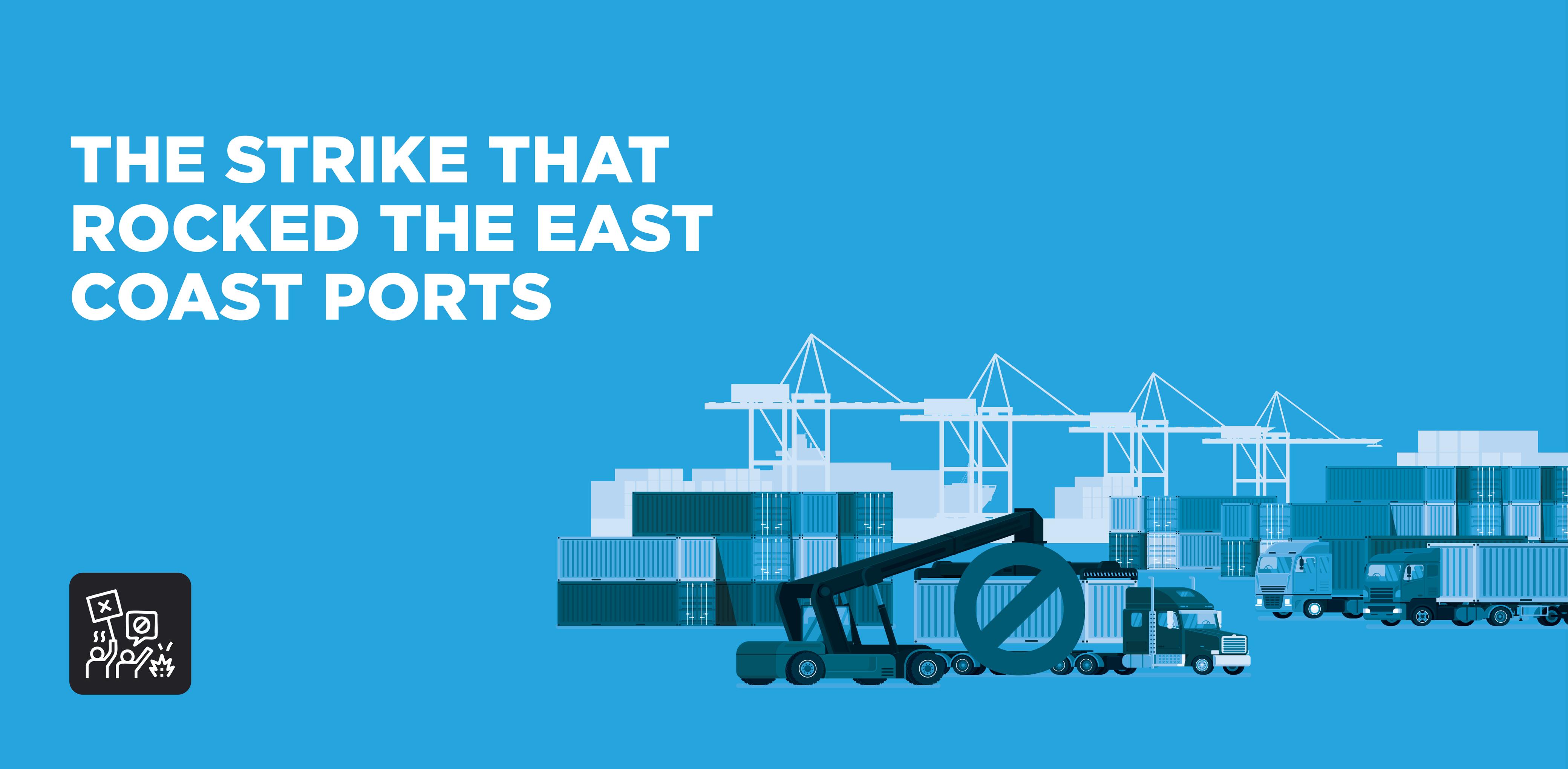The strike that rocked the east coast ports
The month of October is a surprising paradox in the logistics world. No ships are sailing, and no trucks are rolling but the first day of the month woke up to almost 50,000 longshoremen honking their horns to draw attention to wage issues, the policies regarding automation and more. This is happening because of the ongoing negotiations between the dockworkers' union and the port ownership group USMX. While this standoff may seem unfortunate, it is a necessary one. So why would 50,000 dock workers strike for the first time since 1977?
What is Happening at the Ports?
The dock employee union went on strike on a scale so big that it can be called a serious wake-up call for the port authorities. The goal was to help the port authorities understand the magnitude of their wage issues.
The union’s demand for a 77% pay raise over six years was an effort to offset inflation and stagnant wages. Despite ports offering a 50-62% hike, tensions remain high, especially as the U.S. East and Gulf Coast ports, handling billions in trade, have been paralyzed. The strike isn’t just about money; it’s about the future of these workers as automation threatens to replace their roles, putting even more strain on industries reliant on these ports.
The Ripple Effects
Had the shutdown continued longer than the three days it did, prices of all commercial goods would have skyrocketed in the long run, which is not ideal for an economy to thrive.
Rerouting of containers has also unleashed absolute chaos due to confusion among consignment locations between drayage carriers and ports. This has also driven business costs with surcharges and inland transportation costs.
Truckers, many of whom are small business owners, are especially hard-hit as they rely on these ports to sustain their livelihoods. With 95% of trucking companies operating fewer than 10 trucks, the burden of delayed shipments and rising transportation costs is heavy.
What Does the Government Say?
President Joe Biden weighed in briefly, drawing parallels to previous West Coast labor negotiations, but stopped short of invoking the Taft-Hartley Act, which could force workers back to their jobs for an 80-day "cooling off" period. The president’s stance is complicated by the need to balance supporting labor unions while not jeopardizing economic stability—a balancing act made even trickier with the upcoming election.
Avoided disruptions
Thankfully, with the strike now suspended, shortages and price hikes are not problems looming in our immediate surroundings. Had the strike persisted for more than a month, higher prices on fruits, vegetables, cars, and more would have been inevitable.
However, this doesn’t mean we’re out of the woods. The retailers still have to recoup the storage costs of housing all those unsold goods for extended timelines. The silver lining? Most holiday goods are already in the country, so shoppers may not feel the sting as much as expected.
What Do Truckers Say?
“If we have to be out here a month or two months, this world will collapse,” said ILA President Harold Daggett.
Truckers are the first to feel the heat. For them, this isn’t just a supply chain issue; it’s personal. Many rely on ports like New York and New Jersey, which typically see 12,000 truck visits daily. What used to be a $300 short-haul trip to Savannah now costs closer to $2,000, thanks to increased mileage, fuel, and time on the road to reach Norfolk instead. Thus, the incident has been a wake-up call asking for the drayage carriers to understand the fragility of supply chains.
Conclusion:
With ports reopening and truckers back on the road, businesses can start to breathe a little easier, but the disruptions have underscored how fragile supply chains can be. Truckers, in particular, have felt the brunt of this upheaval, from soaring transportation costs to delayed shipments. This event has been a wake-up call for everyone in the supply chain, pushing Book Your Cargo to rethink our strategy and revamp our processes.
At BYC, we understand the challenges truckers and businesses face in times of disruption. We know how unpredictable drayage can be in these times, and we’re here to help you plan and adapt to these changes. Whether you’re concerned about port congestion or fluctuating fuel prices, we’re ready to have a conversation about your needs and help you navigate these complexities.
In these uncertain times, BYC is committed to being your trusted partner in delivering efficient, reliable drayage solutions for all your cargo needs. While we hope for a quick resolution, we believe that, together, we can navigate these challenges smoothly.

 Go Back
Go Back 
